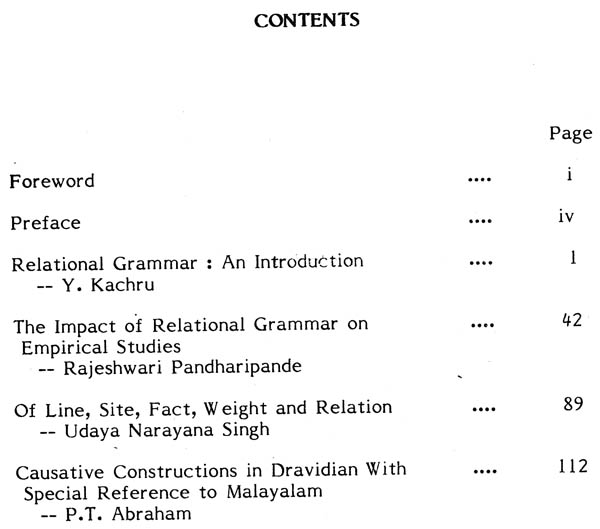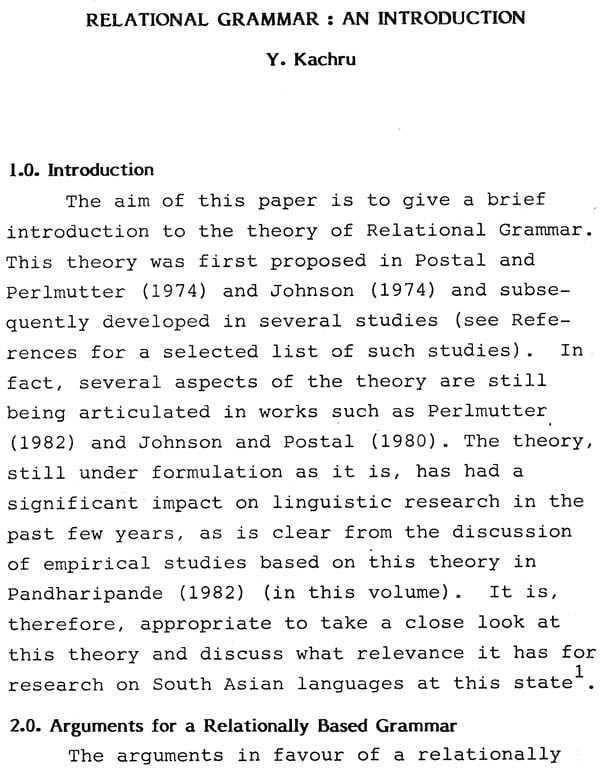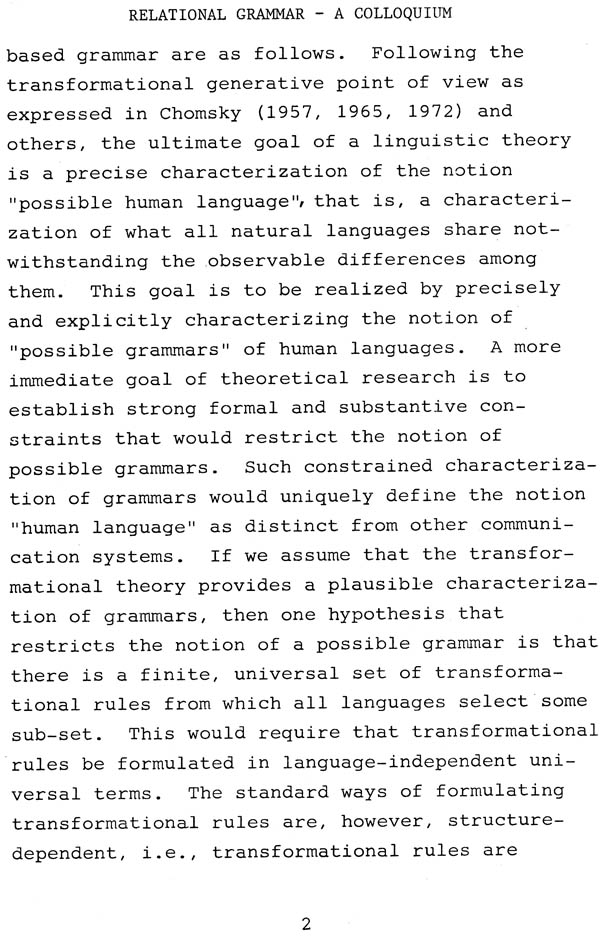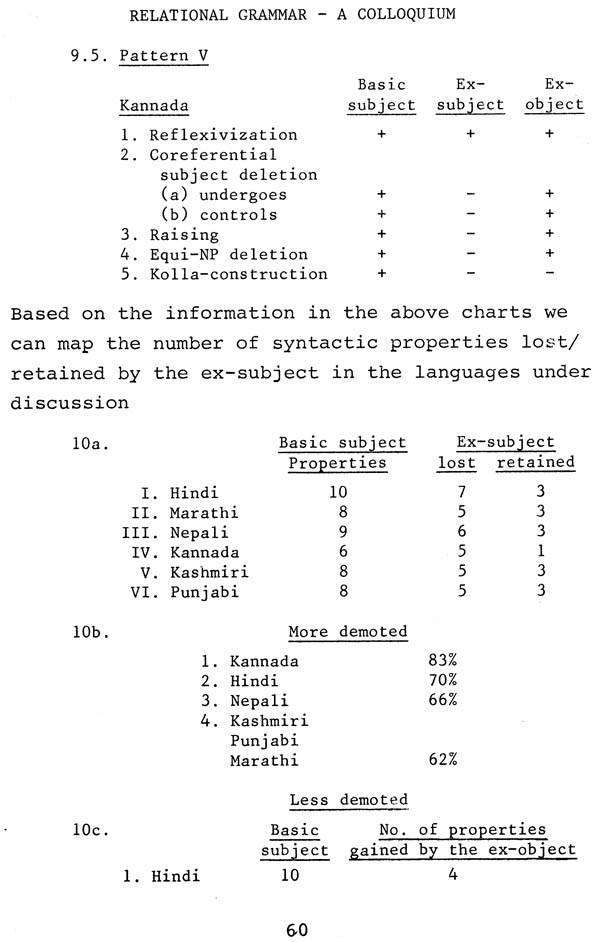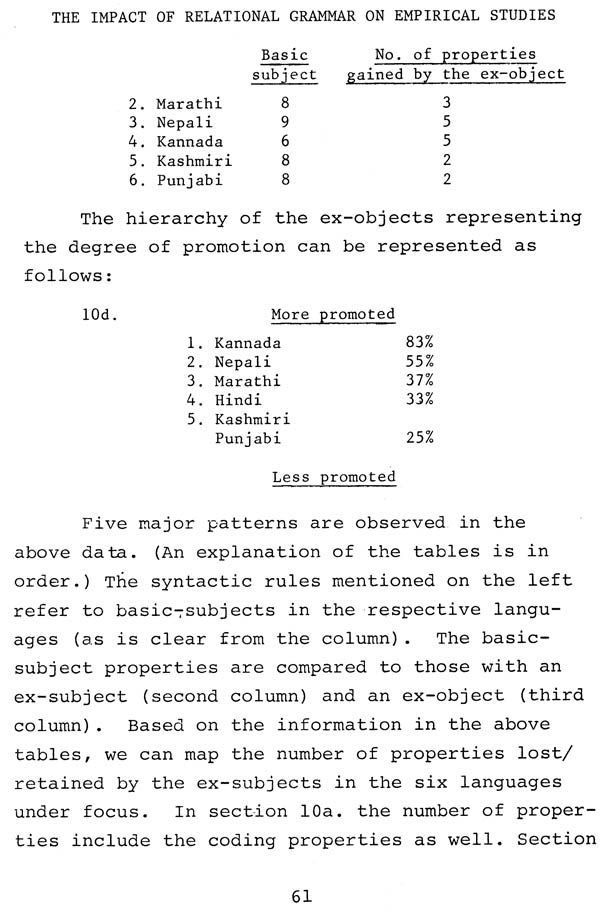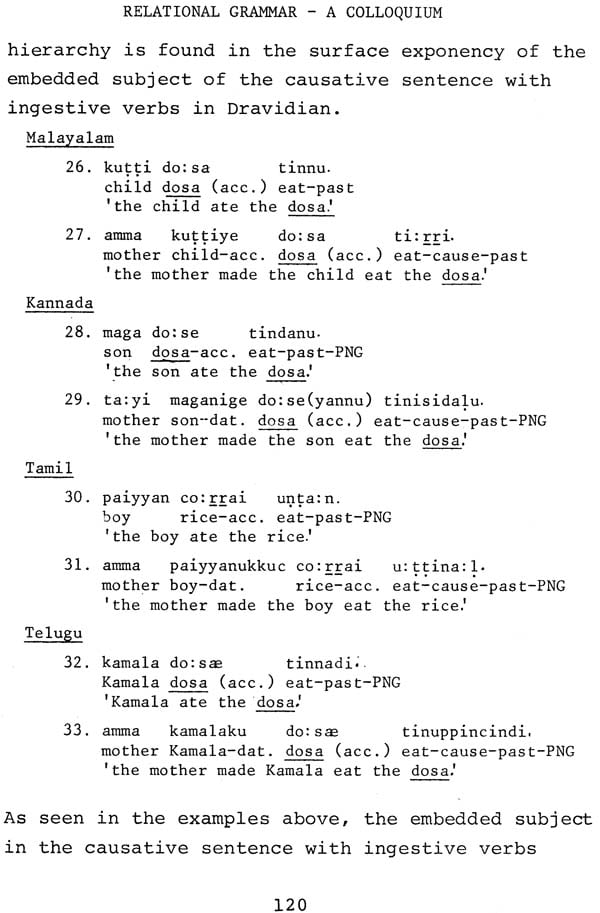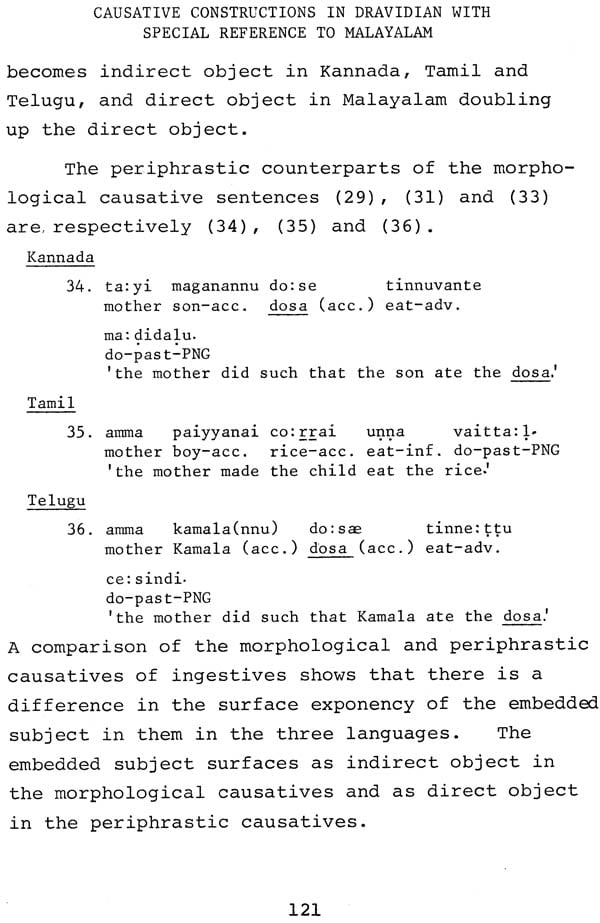
Relational Grammar: A Colloquium (An Old and Rare Book)
Book Specification
| Item Code: | NAW219 |
| Author: | D.P. Pattanayak and Yamuna Kachru |
| Publisher: | Central Institute Of Indian Languages, Mysore |
| Language: | English |
| Edition: | 1985 |
| Pages: | 144 |
| Cover: | PAPERBACK |
| Other Details | 10.00 X 7.00 inch |
| Weight | 230 gm |
Book Description
Scriptural exegesis has been prime motivator of grammar, whether it is Gesenius' Hebraische Grammatik and its derivatives, or Panini, Katyayana, Patanjali and Bhartrhari, or Tolkappiyar. According to Bhartrhari, though grammar is Sastra (science), its procedure is vyavaharika. In Tolkapplyam, the word ilakkanam refers not only to the grammar of a language but that of literature as well. The modern definition of grammar, "study or science of rules for the words and structure of language’ (The Advanced Learners’ Dictionary of Current English) or ‘a’ device which generates all and only the grammatical sentences of a language' is far removed from the early grammatical tradition in more than one way. First, while the early grammars were dependent on actual text, the present grammars are dependent on intuition. Second, while the old grammars approximated to natural language, The new grammars are algorithmic and only very indirectly concern themselves with SO usage. Third, and most important, while the old grammarians chose a middle path between the scientific and the popular, the new academic linguists brought about a split between the two, partly because of their ignorance of the philosophic base of traditional grammar, and partly because of their training in the West where the new science of linguistics was reborn primarily because of the emphasis on recording preliterate languages.
Grammar is both theory and its application. When a grammar is written for scholars, ardhamatralaghavena putrot savam manyante vaiyakaranah ("saving of half a matra (vowel length) gives as much pleasure to the grammarian as the birth of a son'') makes sense. But when grammar is written on the basis of interaction with society and becomes user oriented, prayogasaranah vaiyakaranah ("Grammarians have to take into account the usage of the language’) makes sense.
User oriented grammar like user oriented science is an anathema to the academic scientist. As that technology which results from the interaction of science with a given society is appropriate for that society. A grammar is appropriate only if it meets the needs of specific user groups. This means that there cannot be one grammar, but a series of grammars for any language to meet the varied needs of learners and researchers. The coverage, the treatment, the presentation and consequently their notions of grammaticality are bound to be different for different grammars. The descriptive and explanatory adequacy for the grammar based on observational adequacy of a limited need should be accepted as valid by the academic grammarians.
The Institute from time to time has held symposia and workshops on various schools and styles of grammars. A volume on grammatical analysis based on a course by Professor K.L.
Pike following the tagmemic lines is under publication by the Institute. The relational grammar naturally became our next target of study. It was lucky that we got scholars Such as Yamuna Kachru and Rajeshwari Pandharipande to set up a group for discussing the state of the art in relational grammar. The results of that discussion are contained in this volume. I am grateful to Yamuna Kachru who agreed to edit’ the volume with me.
I wish to express thanks to all those who contributed papers to this volume and responded graciously to the rigours of editing.
I also wish to put on record my sincere appreciation of the work done by Shri H.L.N. Bharati and other colleagues in the CIIL Press who are responsible for the execution of this work.
I hope that scholars in India and abroad will find the book Stimulating.
This volume contains papers specially commissioned for a workshop on Relational Grammar organized by my colleague Rajeshwari Pandharipande and myself as part of the Third International Conference on South Asian Languages and Linguistics held in Mysore from January 12-16, 1982.
There is one main reason for the interest in Relational Grammar shown by South Asian linguists. More than any other contemporary grammatical theory, this theory has utilized the typological research in linguistics in the formulation of its basic framework. Since a major interest of South Asian linguists in recent years has been to provide evidence in support of 'South Asia as a linguistic area’, this theory seems to be particularly useful for research on languages of this important region. The other reason, of course, is that Relational Grammar has become a part of the contemporary linguistic paradigm just as much as, for example, Transformational Grammar, Case Grammar and Systemic Grammar. And yet, most of the early theoretical work on Relational Grammar, such as Postal and Perlmutter 1974 and Johnson 1974, are not available in South Asia; even the published material is not readily available to all centers of teaching and research in linguistics in the area. It was to fill this gap that at the invitation of D.P. Pattanayak, Director, Central Institute of Indian Languages, Mysore, these papers have been put together in a monograph. In this form, the results of the workshop are now readily accessible to scholars and students of linguistics in South Asia.
The four papers collected here provide a general introduction to the theory (Yamuna Kachru), a detailed description of empirical research based on the paradigm (Rajeshwari Pandharipande), two examples of a paper based exclusively on South Asian data - a study on Maithili raising some interesting questions that the theory has to take into account (Udaya Narayana Singh) and a study on Dravidian with special reference to Malayalam bringing out some new data to be handled by the theory (P.T. Abraham). All the four papers point out the areas where the theoretical formulations of Relational Grammar need revision to account for data from South Asian languages and point out further directions of research. As such, it is my hope that this volume will be of interest to linguists in general and South Asian linguists in particular.
**Contents and Sample Pages**
